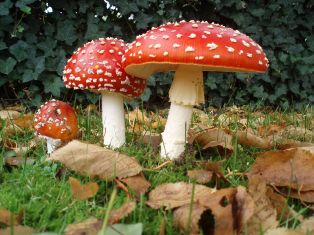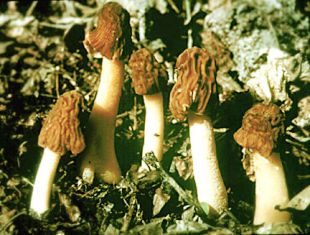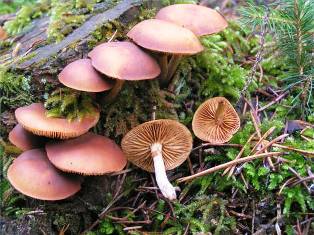Discover Florida Nature
It's time to explore the natural Florida


|
|
|
| Florida Poison Control Center 1-800-222-1222 | |
|
|
Keep a Poison Information Center number near your telephone. If you
suspect possible poisoning from a plant : Call the Poison Center
immediately at 1-800-222-1222! Remove all plant pieces
from mouth. Rinse mouth and lips with cool water. Offer sips of water to
drink. Wash hands with soap and water. If asked to go to the emergency
room take part of the plant, seeds, or berries with you to aid
identification. Poinsettia
(Euphorbia pulcherrima)- It's common around Christmas time for people to
warn one another about the alleged toxicity of poinsettias. Poinsettia's
have had a long history of tales on how toxic it is. The truth is The
ASPCA Animal Poison Center in Urbana, Illinois says it regards
poinsettias as having such low toxicity risk that it doesn't even
recommend decontaminating animals that may have ingested them. The
center says that there can sometimes be gastrointestinal distress from
having ingested something alien to the digestive system. in Fact a 50
pound child would have to ingest 500-600 poinsettia leaves to be in
danger of poisoning. Poinsettia
(Euphorbia pulcherrima)- It's common around Christmas time for people to
warn one another about the alleged toxicity of poinsettias. Poinsettia's
have had a long history of tales on how toxic it is. The truth is The
ASPCA Animal Poison Center in Urbana, Illinois says it regards
poinsettias as having such low toxicity risk that it doesn't even
recommend decontaminating animals that may have ingested them. The
center says that there can sometimes be gastrointestinal distress from
having ingested something alien to the digestive system. in Fact a 50
pound child would have to ingest 500-600 poinsettia leaves to be in
danger of poisoning. Poison
Ivy (Toxicodendron radicans)- Poison ivy, poison oak, and
poison sumac are plants that can cause a skin rash called allergic
contact dermatitis when they touch your skin. The red, uncomfortable,
and itchy rash often shows up in lines or streaks and is marked by
fluid-filled bumps (blisters) or large raised areas (hives). It is the
most common skin problem caused by contact with plants (plant
dermatitis). Poison
Ivy (Toxicodendron radicans)- Poison ivy, poison oak, and
poison sumac are plants that can cause a skin rash called allergic
contact dermatitis when they touch your skin. The red, uncomfortable,
and itchy rash often shows up in lines or streaks and is marked by
fluid-filled bumps (blisters) or large raised areas (hives). It is the
most common skin problem caused by contact with plants (plant
dermatitis). Pothos
(Epipremnum)-The pothos are tough, adaptable plants. Their
climbing/trailing habit makes them extremely decorative and useful in a
variety of settings, and their variegated forms add a type of interest
not available with true philodendron. The entire pothos plant can be
toxic, especially to animals. Signs of possible poisoning include
vomiting, diarrhea, redness and swelling, dermatitis, itching and
burning of lips, tongue, mouth, and also throat. Pothos causes oral
irritation, intense burning and irritation of the mouth, lips, tongue,
excessive drooling, vomiting, difficulty in swallowing. In birds can
cause dysphagia, regurgitation, inappetence. Pothos
(Epipremnum)-The pothos are tough, adaptable plants. Their
climbing/trailing habit makes them extremely decorative and useful in a
variety of settings, and their variegated forms add a type of interest
not available with true philodendron. The entire pothos plant can be
toxic, especially to animals. Signs of possible poisoning include
vomiting, diarrhea, redness and swelling, dermatitis, itching and
burning of lips, tongue, mouth, and also throat. Pothos causes oral
irritation, intense burning and irritation of the mouth, lips, tongue,
excessive drooling, vomiting, difficulty in swallowing. In birds can
cause dysphagia, regurgitation, inappetence.  Rosary
Pea (Abrus precatorius)- Rosary Pea is native to Indonesia and
grows in tropical and subtropical areas of the world where it has been
introduced, including Florida. The toxin present in Rosary Pea is a
close relative to ricin called abrin. The toxin causes ingestion,
specifically when chewed or split open rosary pea can cause severe
symptoms, including vomiting, diarrhea, burning/corroding the esophagus,
shock, multi-organ failure (liver, kidneys, respiratory failure) Rosary
Pea (Abrus precatorius)- Rosary Pea is native to Indonesia and
grows in tropical and subtropical areas of the world where it has been
introduced, including Florida. The toxin present in Rosary Pea is a
close relative to ricin called abrin. The toxin causes ingestion,
specifically when chewed or split open rosary pea can cause severe
symptoms, including vomiting, diarrhea, burning/corroding the esophagus,
shock, multi-organ failure (liver, kidneys, respiratory failure)Wild Mushrooms- Every mushroom hunter should be familiar with the three most dangerous groups of fungi. These are the amanitas, the false morels and a catch-all category known as little brown mushrooms (LBMS). Mushrooms in these groups cause virtually all the fatal mushroom poisonings in the United States, with amanitas alone accounting for 90 percent of mushroom-related deaths. There also are hundreds of other mushrooms that will cause anything from a mild stomachache to severe physical distress-including vomiting, diarrhea, cramps and loss of coordination. These pictures and descriptions will help you avoid them.  Amanita
have one distinctive feature that makes them unique, but you'll have to
get on your hands and knees to find it. All Amanitas have a bulbous
base. Sometimes that bulge doesn't grow above ground, in which case, the
actual mushroom will have to be dug out to inspect the base. The key to
this is digging the entire mushroom out of the ground so the stem does
not break above the bulge. Amanita
have one distinctive feature that makes them unique, but you'll have to
get on your hands and knees to find it. All Amanitas have a bulbous
base. Sometimes that bulge doesn't grow above ground, in which case, the
actual mushroom will have to be dug out to inspect the base. The key to
this is digging the entire mushroom out of the ground so the stem does
not break above the bulge. Morels
are probably the most consumed mushroom that there is. Prized for their
flavor, morels are instantly recognizable with their wrinkled caps and
thick stems. Which is exactly what a false morel
looks like. There are, however, two distinctive ways to determine which
is which. The biggest distinction between the two is that real morels
are spring mushrooms, and false morels generally come up later in the
year. Which means, if you find a morel past mid-June, chances are it is
going to be a false morel. On rare occasions, false morels will come up
in the spring, and on equally rare occasions, real morels may come up
later in the year. Real morels have caps that are attached to the stem.
False morels have caps that aren't attached. To test a mushroom, try to
run your pinky finger up the side of the stem and under the cap. On a
real morel, your pinky will be positively stopped by the membrane that
holds the cap securely onto the stem. On a false morel, your finger will
travel beneath the cap nearly reaching the top. If that happens, don't
eat it, it's a false morel. Morels
are probably the most consumed mushroom that there is. Prized for their
flavor, morels are instantly recognizable with their wrinkled caps and
thick stems. Which is exactly what a false morel
looks like. There are, however, two distinctive ways to determine which
is which. The biggest distinction between the two is that real morels
are spring mushrooms, and false morels generally come up later in the
year. Which means, if you find a morel past mid-June, chances are it is
going to be a false morel. On rare occasions, false morels will come up
in the spring, and on equally rare occasions, real morels may come up
later in the year. Real morels have caps that are attached to the stem.
False morels have caps that aren't attached. To test a mushroom, try to
run your pinky finger up the side of the stem and under the cap. On a
real morel, your pinky will be positively stopped by the membrane that
holds the cap securely onto the stem. On a false morel, your finger will
travel beneath the cap nearly reaching the top. If that happens, don't
eat it, it's a false morel. The
quintessential little brown mushroom is the galerina,
or deadly galerina, as it is commonly referred to. They are primarily
found on dead and downed wood or stumps, and more often than not, they
form in clusters. Galerinas are very common, and contain the same toxins
as Amanita; the difference is that they are small and do not readily
resemble any kind of edible mushroom in appearance. Therefore, although
deadly poisonous, just on sight alone, they are not very appealing, and
are generally avoided as a matter of course. With that in mind, any and
every little brown mushroom should be avoided and never ingested unless
full spore and chemical tests are performed to make positive
identification. The
quintessential little brown mushroom is the galerina,
or deadly galerina, as it is commonly referred to. They are primarily
found on dead and downed wood or stumps, and more often than not, they
form in clusters. Galerinas are very common, and contain the same toxins
as Amanita; the difference is that they are small and do not readily
resemble any kind of edible mushroom in appearance. Therefore, although
deadly poisonous, just on sight alone, they are not very appealing, and
are generally avoided as a matter of course. With that in mind, any and
every little brown mushroom should be avoided and never ingested unless
full spore and chemical tests are performed to make positive
identification. |
|
|
Advertise | Privacy Statement | Dog Encyclopedia | Video |Contact | Alaska Nature |
|